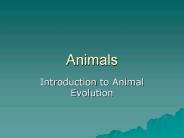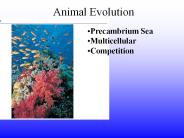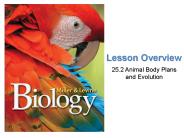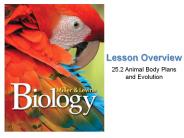Protostomes PowerPoint PPT Presentations
All Time
Recommended
Characteristics of Protostomia: ... the body by diffusion Most do not have a respiratory or circulatory system Planaria Marine Flatworm Tapeworm Fluke Nematodes: ...
| PowerPoint PPT presentation | free to view
squids, Octopus, Nautilus, cuttlefish, Siphon on mantle edge 'rocket' away from predators ... Mollusca. Class Cephalopods. Octopus. Complex behavior, learning ...
| PowerPoint PPT presentation | free to view
Phylum Rotifera ~2000 species Corona of ciliated cells Pseudoceolomic Central nervous system Complete gut Many species are female only Parthenogenetic Phylum ...
| PowerPoint PPT presentation | free to view
Protostomes include flatworms, annelids and molluscs. Spiral cleavage ... Lophotrochozoan protostomes include annelid worms, molluscs, & some small phyla. ...
| PowerPoint PPT presentation | free to view
... (Radiata): phyla Cnidaria Grade II (Bilateria): all other phyla Division A (Protostomia): Mouth is first opening Subdivision of Protostomes by coelom formation: ...
| PowerPoint PPT presentation | free to download
AN INTRODUCTION TO ANIMAL EVOLUTION ECDYSOZOA Bilateral animals are divided into two clades Protostomes Deuterostomes Protostomes are themselves divided into two ...
| PowerPoint PPT presentation | free to view
Chapter 25. INVERTEBRATES. COELOMATE PROTOSTOMES. Coelomate protostomes. include ... The best known of the invertebrates. 50,000 living species. 35,000 fossil species ...
| PowerPoint PPT presentation | free to view
Outline The coelom Molluscs Bivalves Cephalopods Gastropods Annelids Arthropods Crustaceans Uniramians Chelicerates Echinoderms Advantages of Coelom Protostomes vs ...
| PowerPoint PPT presentation | free to view
Phylum Mollusca Phylum Mollusca Protostomes Lophotrochozoan group Eucoelomates (coelomates) Phylum Mollusca Soft Bodied Shelled Some without Cephalization Sensory ...
| PowerPoint PPT presentation | free to view
Phylum Molluska. Over 50,000 species. Coelomate, Protostomes, Bilaterally symmetrical ... Cuttlefish and octopi may communicate by skin coloration. Cephalopod ...
| PowerPoint PPT presentation | free to view
Animals Introduction to Animal Evolution What is an Animal? Multicellular, heterotrophic, eukaryotes Cells lack cell walls, held together by structural proteins ...
| PowerPoint PPT presentation | free to download
Protostome Animals
| PowerPoint PPT presentation | free to view
Development Introduction Early Stages of Development Quiz part 1 Suites of Developmental Characters Quiz part 2
| PowerPoint PPT presentation | free to download
Invertebrate Animals (MOST Animals -- 95%!) Animal Phylogeny Porifera (Sponges) Simple, ALMOST Colonial No Symmetry No Gut 2 Tissue Layers Acoelomate ( Spongocoel ...
| PowerPoint PPT presentation | free to view
Now Three Domains and 6 Kingdoms. Conventional Classification of ... Hydra. sea pens. soft corals. 2 tissue layers: ectoderm, endoderm. sea anemones. jellyfish ...
| PowerPoint PPT presentation | free to download
Animals = invertebrates and vertebrates (95% of all animals are invertebrates) Animal Characteristics The bodies of animals are multicellular.
| PowerPoint PPT presentation | free to view
Title: Chapter 32 Author: sean reagin Last modified by: administrator Created Date: 5/13/2002 10:56:18 PM Document presentation format: On-screen Show
| PowerPoint PPT presentation | free to download
Animal Bauplan Symmetry and complexity Chapter 3: Animal Architecture * * * * * * * * * * * * III. Symmetry Radial symmetry: body parts organized about a center axis ...
| PowerPoint PPT presentation | free to download
Human Embryology. Fertilization. Fertilization- results in a zygote ... middle piece- contains mitochondria (make energy; ATP) ...
| PowerPoint PPT presentation | free to view
Title: PowerPoint Presentation Last modified by: bferguson Created Date: 1/1/1601 12:00:00 AM Document presentation format: On-screen Show (4:3) Other titles
| PowerPoint PPT presentation | free to view
An introduction to animal diversity BY Carlos Paez
| PowerPoint PPT presentation | free to download
Principles of Development Chapter 8
| PowerPoint PPT presentation | free to download
BSC 2010L. INVERTEBRATES II. Principal Biological Concepts to Emphasize: ... you view '33A Characteristics of Invertebrates' on Student Media CD-ROM for review. ...
| PowerPoint PPT presentation | free to download
Invertebrates Packet #77 Chapters 33 & 47 Introduction I Introduction II Invertebrates- Animals Without Backbones Ninety five percent of all known animals species are ...
| PowerPoint PPT presentation | free to download
Recall that Bilateralia includes two great groups of organisms Protostomia and ... Beginning of organogenesis. Significant segmentation ...
| PowerPoint PPT presentation | free to download
Animal gametogenesis and embryology (chapters 25, 32, 47) What is an animal? ... nervous and muscle tissues are unique. distinctive stages of development ...
| PowerPoint PPT presentation | free to view
Reproductive system is not well understood: Only female reproductive organs have been identified. ... Pigs become infected by eating grubs.
| PowerPoint PPT presentation | free to download
By definition, in true coelom- mesentery. tissue connects organs to body cavity wall ... Also, by definition coelom is fluid-filled body. cavity, found in ...
| PowerPoint PPT presentation | free to view
Phylum Chaetognatha- arrow worms (resemble tiny, planktonic fish) More closely related to ... acorn worms. Not related to true worms. Stomochord-- notochord ...
| PowerPoint PPT presentation | free to view
Animal Evolution I. Animal traits A. Heterotrophic B. Mobile C. Lack cell walls D. Possess nerve and striated muscle D. Reproduces sexually 1.
| PowerPoint PPT presentation | free to view
Each animal phylum has a unique body plan. Vertebrates have an internal segmented backbone. Invertebrates do not have a backbone. Invertebrates encompass most animal ...
| PowerPoint PPT presentation | free to download
Chapter 30: Animals: Part I Evolution and Classification of Animals Animals are multicellular heterotrophs that ingest their food. Animals belong to the Eukarya and ...
| PowerPoint PPT presentation | free to view
KINGDOM ANIMALIA Characteristics of Animals 5. Segmentation Segmentation refers to the repetition of body parts that contain similar structures along the length of ...
| PowerPoint PPT presentation | free to view
Zoology Chapter 12 Mollusk Ms.K.Cox
| PowerPoint PPT presentation | free to download
Phylum Rotifera Rotifers have a ciliated crown, the corona, that is characteristic of the phylum. Phylum Rotifera Rotifers come in a wide range of colors and shapes.
| PowerPoint PPT presentation | free to view
... Phylum Bryozoa Phylum Annelida Phylum Arthropoda Phylum Mollusca Enterocoelous Phylum Echinodermata Phylum Chordata Coelom Development Endoderm ...
| PowerPoint PPT presentation | free to download
| PowerPoint PPT presentation | free to view
Phylogeny of Extant Phyla Phylum Porifera Porifera Characteristics Choanocytes Amoebocytes Anatomy of Simple Sponge A More Complex Sponge Phylum Cnidaria Cnidaria ...
| PowerPoint PPT presentation | free to view
(1) Bottom-dwelling filter feeder with lophophore arms (2) ... (Cephalochordate) (Urochordate) (Enteropneusts) Possible evolutionary tree of early vertebrates ...
| PowerPoint PPT presentation | free to view
Several small phyla of protostome coelomates include examples from superphyla ... the tube-dwelling vestimentiferan worms found at hydrothermal vent systems. ...
| PowerPoint PPT presentation | free to view
Attach to substratum by secretions from an adhesive sac, then metamorphose to adult form. New colonies begin from this single metamorphosed primary zooid, ...
| PowerPoint PPT presentation | free to download
Filter food from water pumped through porous bodies nearly all are ... Any imaginary slice through the central axis would divide the animal into mirror ...
| PowerPoint PPT presentation | free to view
Try again! Question 6 ... Outer surfaces, neural tissue The endoderm lines the embryonic digestive tract. ... Muscles, reproductive system Gastrulation ...
| PowerPoint PPT presentation | free to download
Structural basis for assembly and sulfide binding in the 400kDa hemoglobin from the hydrothermal ven
| PowerPoint PPT presentation | free to view
Are very diverse in form and habitat. Most reproduce sexually. Have a characteristic pattern ... 1. Separation of annelids and arthropods into different clades ...
| PowerPoint PPT presentation | free to view
C. Gastrulation in the sea urchin. D. Gastrulation in the ... Arthropods. Mollusks. Annelids. Echinoderms. Chordates. TIME. Fig. 32.7a. Cells NOT totipotent ...
| PowerPoint PPT presentation | free to download
Lesson Overview 25.2 Animal Body Plans and Evolution
| PowerPoint PPT presentation | free to download
Title: 31.1 Animals are multicellular heterotrophs without cell walls. Some General Features of Animals Animals are multicellular heterotrophs that are diverse in ...
| PowerPoint PPT presentation | free to view
Introduction to Kingdom Animalia Characteristics of Animals Heterotrophic Multicellular Movement Eukaryotic Basic Embryology Define: Zygote Embryo Blastula Gastrula ...
| PowerPoint PPT presentation | free to view
invertebrate survey lab spring 09 ...
| PowerPoint PPT presentation | free to download
INTRODUCTION TO ANIMAL DIVERSITY Chapter 32 Our Kingdom We are Animals Animals Are Species-rich Morphologically diverse lineage of multicellular organisms on the tree ...
| PowerPoint PPT presentation | free to download
Title: Table of Contents Author: Wendy Beck Last modified by: Michael Moon Created Date: 10/16/2000 7:08:56 PM Document presentation format: On-screen Show
| PowerPoint PPT presentation | free to view
Early development and aging I. Embryonic development Day 1: fertilization 1. Cleavage 1. Cleavage 2. Gastrulation 3. Fate of the germ layers Two great groups of ...
| PowerPoint PPT presentation | free to view
Lesson Overview 25.2 Animal Body Plans and Evolution
| PowerPoint PPT presentation | free to download
ANIMALIA Domain Eukarya, Kingdom Animalia Linnaeus classification: 2 Kingdoms (mid-1700s) Whittaker classification: 5 Kingdoms (1959) http://coralreefwatch.noaa.gov/ ...
| PowerPoint PPT presentation | free to download
























































